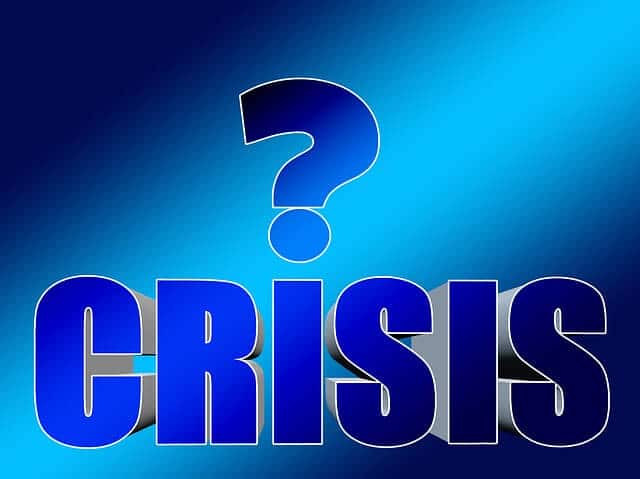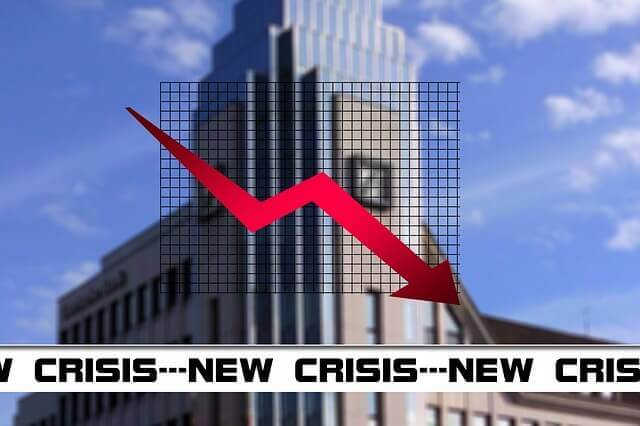Home
/
Bank Interview
/
Twin Balance Sheet Problem
/
TWIN BALANCE SHEET PROBLEM --- (NPAs and other aspects)
TWIN BALANCE SHEET PROBLEM --- (NPAs and other aspects)
The Twin Balance Sheet Problem (TBS): How can Indian Economy Avoid a Crisis?
FILED UNDER: CURRENT AFFAIRS NOTES, ECONOMICS NOTES
 How well is the Indian Economy doing in the last 3-4 years? Economic Survey – the flagship annual document of the Ministry of Finance, Government of India – points out that we should worry about the Twin Balance Sheet Problem, now widely known as TBS problem.
How well is the Indian Economy doing in the last 3-4 years? Economic Survey – the flagship annual document of the Ministry of Finance, Government of India – points out that we should worry about the Twin Balance Sheet Problem, now widely known as TBS problem.First of all, what is a balance sheet?
A balance sheet is a financial statement that summarises a company/institution’s assets, liabilities and shareholder’s equity at a specific point of a time.
OK. Good. What is the Twin Balance Sheet Problem of India?
Twin Balance Sheet Problem (TBS) deals with two balance sheet problems. One with Indian companies and the other with Indian Banks.
Thus, TBS is two two-fold problem for Indian economy which deals with:
- Overleveraged companies – Debt accumulation on companies is very high and thus they are unable to pay interest payments on loans. Note: 40% of corporate debt is owed by companies who are not earning enough to pay back their interest payments. In technical terms, this means that they have an interest coverage ratio less than 1.
- Bad-loan-encumbered-banks – Non Performing Assets (NPA) of the banks is 9% for the total banking system of India. It is as high as 12.1% for Public Sector Banks. As companies fail to pay back principal or interest, banks are also in trouble.
Origin of Twin Balance Sheet Problem in India

- Origin of TBS problem can be traced to the 2000s when the economy was on an upward trajectory.
- During that time, the investment-GDP ratio had soared by 11% reaching over 38% in 2007-08. Thus non-food bank credit doubled and capital inflows in 2007-08 reached 9% of GDP. Due to such a boom in the economy, firms started taking risks and abandoned their conservative debt/equity ratios and leveraged themselves up to take advantage of the upcoming opportunities.
- But Global Financial Crisis (2007-08) reduced growth rates and thus revenues from the investment. Projects that had been built around the assumption that growth would continue at double digit levels were suddenly confronted with growth rates half that level.
- Firms that borrowed domestically suffered when RBI increased interest rates to avoid inflation increasing financial costs.
- Environment and land clearances in infrastructure sector delayed the projects.
- Thus higher cost, lower revenues, greater financial costs-all squeezed corporate cash flow leading to NPAs in the banking sector.
Peculiarities of India’s Twin Balance Sheet Problem (TBS):
- In other countries, corporates over expand during the boom and accumulate obligations which they find difficult to repay. It leads to default and the situation is reached where high NPA levels have triggered banking crises.
- In India, there have been no bank runs, no stress in the interbank market, no need for any liquidity support and GDP growing at a good pace since the TBS problem first emerged in 2010. Yet the problem has reached to this scale where it threatens the stability of the entire banking system.
- The reason for this is that major NPAs are concentrated in Public Sector Banks which have the full backing of the government.
Earlier steps to address the problem of NPA or TBS
India had taken different steps to tackle the NPA or TBS problem which already covered in a different article. Insolvency and Bankruptcy code too was in the same direction. Briefing the important schemes again.
1. 5/25 Refinancing of Infrastructure Scheme
- This scheme offered a larger window for the revival of stressed assets in the infrastructure sector and eight core industry sectors.
- Under this scheme, lenders were allowed to extend amortisation periods to 25 years with interest rates adjusted every 5 years, so as to match the funding period with the long gestation and productive life of these projects.
- The scheme thus aimed to improve the credit profile and liquidity position of borrowers, while allowing banks to treat these loans as standard in their balance sheets, reducing provisioning costs.
- Issues faced: However, with amortisation spread out over a longer period, this arrangement also meant that the companies faced a higher interest burden, which they found difficult to repay, forcing banks to extend additional loans (‘evergreening’). This, in turn, has aggravated the initial problem.
2. Private Asset Reconstruction Companies (ARCs)
- ARCs acquire NPAs from banks or financial institutions and try to resolve them.
- ARCs are a product of and derive their asset resolution powers from the SARFAESI Act.
- The issue faced: ARCs have found it difficult to recover much from the debtors. Thus they have only been able to offer low prices to banks, prices which banks have found it difficult to accept.
3. The Strategic Debt Restructuring (SDR) scheme
- The SDR scheme was introduced in June 2015, under which banks could take over firms that were unable to pay and sell them to new owners.
- The issue faced: By December 2016, only two sales have been materialised as many firms remained financially unviable.
4. Asset Quality Review (AQR)
- The RBI emphasised AQR, to verify that banks were assessing loans in line with RBI loan classification rules. Any deviations from such rules were to be rectified by March 2016.
5. The Scheme for Sustainable Structuring of Stressed Assets (S4A)
- An independent agency hired by the banks will decide on how much of the stressed debt of a company is sustainable. The rest (unsustainable) will be converted into equity and preference share.
- The issue faced: Only one case has been solved under this scheme so far.
Why did the above measures fail to solve the TBS problem?

- Loss recognition: Banks do not recognise stressed assets and continue giving loans. They are reluctant to conduct the asset quality review for their assets.
- Coordination problems: Difficulty in deciding compensation by different banks on Joint Lenders Forums which has not achieved much success.
- Court cases: Public Sector Banks are reluctant to write down loans as bank managers are afraid of accusation of favouritism.
- Lack of Capital: Indradhanush Scheme promised to infuse Rs 70,000 crore into Public Sector Banks by 2018-19. But this amount is not enough and banks need atleastRs 1.8 lakh crore more.
Questions over the sustainability of Indian strategy: Phoenix Scenario vs Containment Scenario
- The Indian strategy is based on the two scenarios:
1. Phoenix Scenario – Growth will decrease the bad debt by raising demand and investment cycle.
2. Containment Scenario – In this case, one needs to contain the bad loans in nominal terms and slowly their share would reduce in bank sheets. - Earlier both scenarios seemed feasible but now they are failing as per the recent data. So some new innovative methods are needed to resolve this problem.
What is the solution to the Twin Balance Sheet Problem?
India has till now pursued a decentralised approach where individual banks have taken decisions on its own to resolve NPAs. This approach has not resolved the problem and time have now come to create a centralised agency called Public Sector Asset Rehabilitation Agency (PARA).
Why does India need a Public Sector Asset Rehabilitation Agency (PARA)?

- It will be able to resolve not only NPA problems but also bad debts of the companies, thus resolving TBS Problem.
- The centralised agency would help in fixing the problem faster and the decision will be taken swiftly.
- It could solve the coordination problem since debts would be centralised in one agency.
- The stressed debt is heavily concentrated in large companies and such bigger cases can be resolved by an independent agency.
- Failure of Banks and private ARCs in resolving NPA problem till now.
- An international experience like of East Asian countries has shown that centralised agency can resolve Twin Bet Problem.
Working of PARA
- PARA would purchase loans from banks and then work them by different ways like converting debt to equity and selling the stakes in the auction.
- After taking off the loans from Public Sector Banks, the government would recapitalize them. Similarly, once the financial viability of the over-indebted enterprises is restored, they will be able to focus on their operations, rather than their finances and will be able to consider new investments.
Funding of PARA
- RBI may transfer some of the government securities to PARA.
- Government funding in the form of securities.
- Rest of the money may come from capital markets.
Conclusion
Twin Balance Sheet Problem (TBS) is a major problem that Indian economy is facing today. The past mechanisms of resolving this problem in the form of decentralised approach have failed. There is no point of delaying this problem because the delay is very costly for the economy as impaired banks are scaling back their credit while the stressed companies are cutting their investments. The time has come to adopt the strategy that East Asia adopted during their crises period. The centralised agency in the form of PARA would allow debt problems to be worked out quickly. The time has come for India to consider the same approach.
Article by: Rahul Sharma, UPSC Topper 2016, With All India
https://www.clearias.com/twin-balance-sheet-problem-tbs/

Post a Comment